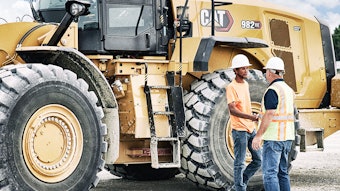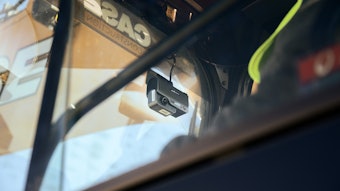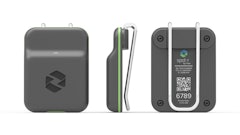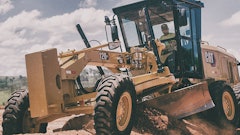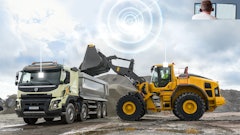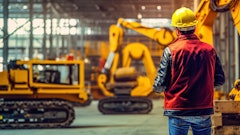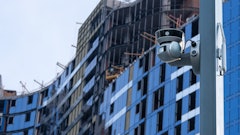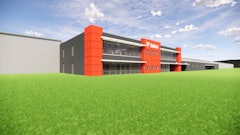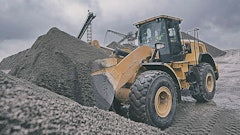The construction industry is facing a pressing set of issues spurred by the cost and supply of skilled workers. In 2019, 70 percent of contractors struggled to meet deadlines and 40 percent rejected new work because they were unable to hire the necessary workers to take on the additional contracts.
But challenges getting jobs done aren’t always caused by labor shortages. The problem often resides in broken – or nonexistent – time tracking processes. The good news is that advancements in technology can help eliminate these errors and free up time. Technologies like facial recognition give contractors and project managers the opportunity to use software to help alleviate the pain caused by labor shortages, while simultaneously helping to streamline costs.
Facial recognition can help eliminate time tracking errors while increasing revenue and improving project outcomes. In the construction industry, a time tracking app with face recognition eliminates three costly activities on any job site: inaccurate data, supervisor oversight and poor project projections. Each of these issues affects a project’s bottom line.
Problem #1: Inaccurate data.
Inaccurate data offers an incorrect picture of workforce capability. Contractors pay an average of 4.5 extra hours of pay per employee, per week due to inaccurate information through time theft, according to a Robert Half Time Theft Survey. Imagine the impact if a project was given an extra 4.5 hours of productivity per employee without increasing payroll costs.
On top of unintentional inaccuracy is buddy punching. Buddy punching occurs when a coworker clocks in another employee when they are not working and it’s one type of time theft contributing to the extra 4.5 hours of pay to employees without any productive output. Clocking in for someone that isn’t actually there is a form of fraud and adds to the overall misinformation inaccurate data provides.
Problem #2: Supervisor time is wasted Supervisors are paid a higher wage than the wage of those they are managing for two major reasons. First, they are highly skilled, often more experienced and capable of keeping an entire team on track. Second, they have proven they can be trusted. Their to-do lists often seem endless, so when they have to perform unnecessary and time-consuming tasks like making sure each employee is actually where their time card says they are throughout the day, they are taken away from more pressing matters. It also limits their ability to simultaneously manage multiple projects at different locations.
Problem #3: Project management projections lose effectiveness Project success is directly connected to the ability to adhere to the plan. Without a time tracking app driven by facial recognition, coworkers have a higher likelihood of selecting the wrong task for their buddy when they clock them in, throwing off all projections in the meantime. This can lead to improper predictions for future projects and skepticism of the data that is collected for upcoming analysis and planning. A plan is only as good as the information used to form it.
Facial recognition solutions
Here are five ways a time tracking app with face recognition capability puts an ineffective operation back on track:
Real-time capture A time tracking app with face recognition removes the guesswork from clocking in and out. An employee simply clocks in, selects the task they will be completing, and the application automatically takes their picture when they confirm their selection. The time tracking app logs the time and compares that picture against their profile photo in the system. The system automatically adds the photo and the time to the supervisor’s visibility in the system for their crew members. If the photo is below the system’s threshold for accuracy, or the wrong person’s photo is taken, the record is flagged and prompted for the supervisor to review. This process does not interrupt the worker from getting to work or clocking in. Each error is handled individually by the supervisor. When you have a time tracking app with face recognition, you know you have the right person clocking in and out and you have accurate labor costs in real-time to keep your project on budget.
Internet connection is not required Many companies assume facial recognition is not for them because they spend so much time in the field or at job sites without access to an internet or cellular connection. A lack of connection only delays the reporting of the clock in and out process, but the time tracking app collects the data as it's entered and stores it on their mobile device and uploads it the next time a synchronization occurs and the internet or cell service is reestablished. This means all data is kept clean and accurate, whether there’s an internet connection or not. Even without an internet connection or cellular service, you'll still use face recognition to make sure the right person is entering their time and tasks. This feature alone typically gives a supervisor the ability to manage multiple sites at the same time with greater accuracy and more visibility.
Time is marked with GPS data Supervisors are able to manage multiple sites at the same time with GPS and geo-fence tracking and management. When they are using a time tracking app with face recognition, they know they have the right employee clocking in and out. In order to be able to manage projects at different locations, a supervisor also needs to know that the employees are clocking in and out while they are at the job site. This means that if an employee clocks in and out without being on-site of the project in reference, the program will flag the action for review. Using GPS tracking and geofencing in combination with face recognition, the project’s productivity will increase because there aren’t any hours allocated to the project when the employee is not performing work on the project.
The technology is simple to use Time tracking software is as easy to use as a banking app. The numbers don’t lie. Over 96% of those 50 and younger have a smartphone, and the average smartphone user has 2.5 mobile banking apps installed on their phone, according to Bankrate. An employee just needs to be able to log into the time tracking app with a pin or password and the app automatically takes a selfie of them or the system can allow them to have the device owner take a photo of them in the app upon clocking in.
In fact, a time tracking app is easier to use and handle than any paper or spread-sheet version of the same process. Employees no longer have to remember project numbers or cost codes to make sure they assign their labor hours to the right job costs. Best-in-class time tracking apps integrate with ERP, Accounting and payroll systems and show only relevant project-specific cost codes based on the crew’s assigned skills.
Increased access to quality data Today, the construction industry is going through a productivity overhaul driven by increasing the quantity of quality information. With the rise of accurate data, contractors can expect an increase in their ability to complete projects on or under budget, expanded productivity and greater profitability –– according to the Dodge Smart Market Report. There is a clear connection between an increase of quality information, a more effective workforce and a healthy bottom line.
Excessive labor costs and skilled labor shortages are a real burden in the construction industry. Fortunately, these burdens can be minimized or eliminated with proper tracking and management. Take the time and explore how apps that track time in real-time with facial recognition can increase the effective use of the time and resources already available on the job site.
Mike Merrill is the co-founder and COO of WorkMax. With 10 years of experience in construction and real estate and 16 years as a technology executive, Mike brings strong leadership and expert knowledge to the WorkMax team. Before running business operations for WorkMax, Mike spent 22 years as an entrepreneur and business owner in the construction and technology industry. He also brings insights and strong industry relationships from his participation in Construction Financial Management Association (CFMA) and Construction Open Standards Alliance (COSA).



